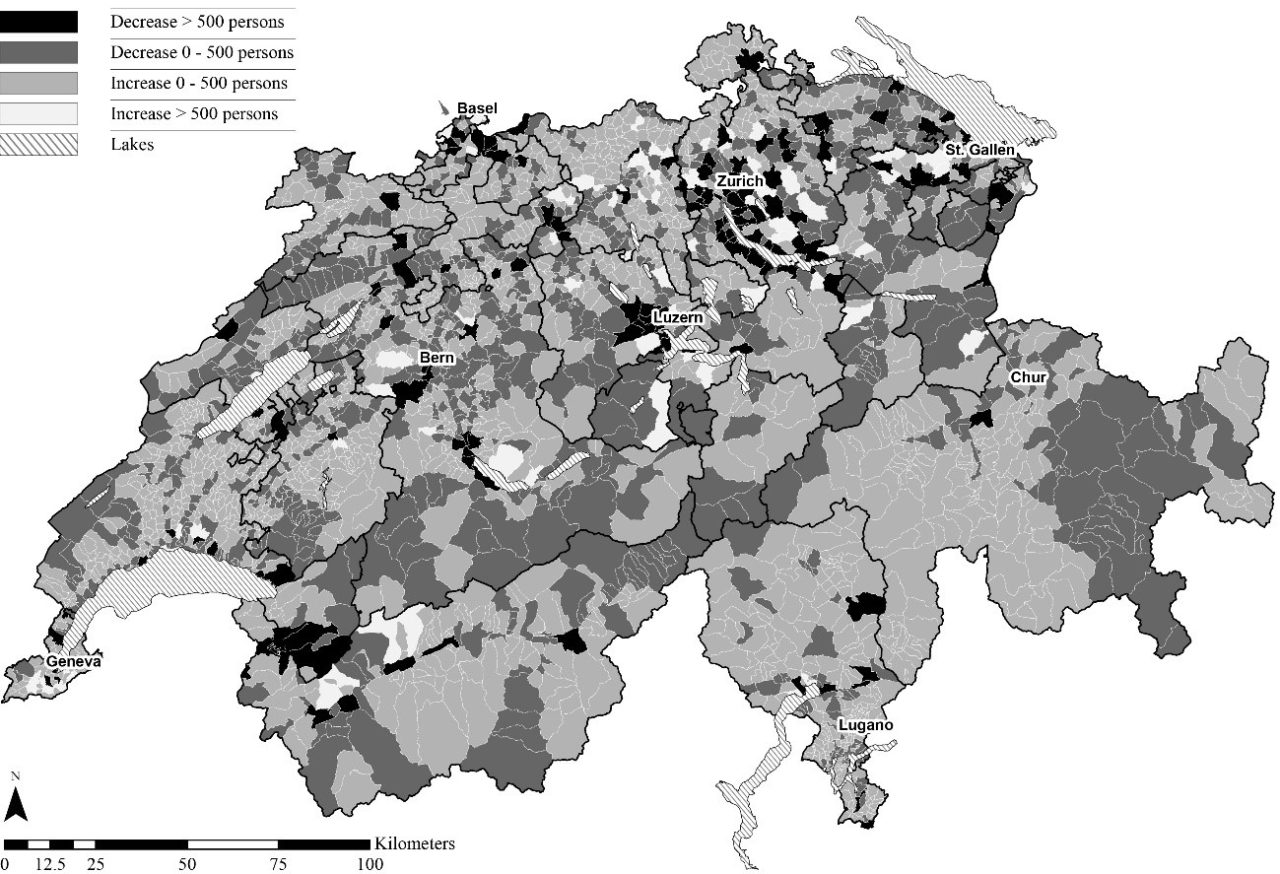
Self-driving vehicles (AVs) will dissolve the boundaries between individual and public transport, changing the attractiveness of different areas as residential locations. The lack of public transport services in peripheral communities is currently leading to population decreases despite great (financial) efforts (e.g. Albinen VS). The aim of this study was to examine the potential of AVs to re-activate such communities in Switzerland.
Regarding a sustainable development for society, environment and economy and bearing in mind the definitive limitation of land as a resource, it is worth examining opportunities that potentially strengthen established communities and their existing infrastructures at peripheral locations.
An important difference between peripheral and central areas are different levels of accessibility. Accessibility (as a potential) not only measures the spatial impact of transport infrastructures (such as travel time) but also the attractiveness of a place or region in terms of its market potential. Previous studies have shown that AVs increase accessibility in peripheral areas whereas urban areas only partially benefit.
Computer Simulated Scenarios
To explore the potential impacts of AVs, several scenarios were conducted using computer simulation following a microsimulation approach that is based on an initial synthetic population (including households, firms, etc.). The progress is simulated by running different sub-models cyclically. In the location choice model agents evaluate where to relocate, considering AV-modifications among other factors.
As in reality, the model accounts for settlement restrictions. If a municipality fills up during the simulation, it can no longer be chosen, and the agents must move to another location. Considering that locations may fill up, results may not always reflect the unconstrainted demand. Therefore, additional sub-scenarios with artificially enlarged building zones (+20%) were conducted.
Population Shifts
The simulations revealed a population shift from urban towards intermediate and rural locations of 8,000 residents p.a. (1‰ of the total population). The six largest swiss cities (Basel, Bern, Geneva, Lausanne, Winterthur, Zurich) even showed a population shift of 3.1% towards non-urban locations. If, on the other hand, the available settlement surface in urban areas was artificially enlarged, population movements to non-urban areas reduced by 90%.
Sufficient living space in urban areas thus appeared as an efficient way to counter for increasing sprawling tendencies of AV without cutting off anyone from advantages created by AV technology.
Full details in German. The thesis is currently reworked into an English version.
Myra Rotermund (*1987) studied architecture and urban planning at the ETH Zurich and at the UBA Buenos Aires. She has a postgraduate specialisation in economics, finance and law at the University of Zurich (thesis supervision Prof. Axhausen, IVT). Her research interests lie on current social, economic and political topics related to space with special emphasis on the duality of city and periphery. She is working in the private sector.
Link to the Article on Albinen: A Swiss village is paying people £15,000 to move there.